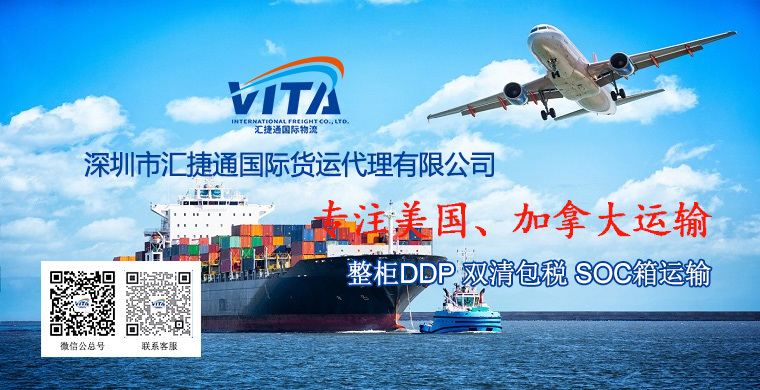All categories >
U.S. shipping rates surge 31.9%! How can exporters break through?
Categories:
News Center
News
Time of issue:
2025-10-24 18:17
Views:

Emergency Alert: U.S.-bound freight rates surge, while space and sailing schedules are disrupted.
Recently, the foreign trade sector has been rocked by a "price hike storm." According to the latest reports, on October 17, export freight rates from Shanghai Port to key U.S. West Coast ports surged by 31.9% compared to the previous week, soaring to $1,936 per FEU. Meanwhile, rates on routes to the U.S. East Coast rose sharply by 16.4%, reaching $2,853 per FEU. Such sudden price increases have caught many traders off guard.
Even worse, space availability has tightened to the point where securing a spot has become nearly impossible. Shipping companies are seeing daily order volumes soar—tripling their usual levels. A freight forwarder in Lianyungang revealed, "All routes are completely booked, forcing even vessels bound for other destinations to turn around and head straight for U.S. services instead." Meanwhile, a freight forwarder in Yancheng bluntly admitted, "Even when shippers pay premium rates, reserved containers often end up canceled—or worse, shipments already en route are suddenly asked to cover additional fees." As a result, schedules are thrown into chaos, with canceled bookings and "container rejections" becoming the new normal.
Analysis of the Reasons Behind the Surge in Freight Rates
(1) Sudden Drop in Capacity and Rebounding Demand
Since September, shipping companies have massively canceled U.S.-bound voyages amid tariff concerns, and October is expected to see a record number of service disruptions between China and the U.S. However, following the National Day holiday, surging demand for Christmas stocking-up in the U.S. has triggered a concentrated release of previously delayed orders, creating a "capacity vacuum" period.
(II) Escalation of Port Fee Negotiations
Starting October 14, China and the U.S. imposed reciprocal special port charges on specific vessels. To pass on these increased costs, shipping companies have adopted measures such as "re-routing ships, bypassing certain ports, and reducing sailings," directly leading to disruptions in scheduled service frequencies.
(III) Peak Season Inventory Preparation Combined with Policy Concerns
U.S. retailers have been stockpiling months' worth of inventory ahead of Amazon Prime Day and Black Friday sales, with "speed over price" becoming the new norm. Meanwhile, uncertainty surrounding November's tariff policies has prompted even more companies to opt for "expedited shipping as a risk-mitigation strategy," further fueling the already intense scramble for shipping space.
A Guide for Foreign Trade Professionals to Break Through
(1) Booking Strategy
• Advance booking: Upgraded from "one week in advance" to booking 15–20 days ahead, with a focus on securing space on the shipping lines' core routes.
• Enter into long-term agreements: Prioritize signing Long-Term Agreements (LTAs) to lock in costs for 3–6 months, safeguarding against the impact of spot price fluctuations.
(II) Transportation Plan
• Small-batch LCL: Light and small items are transported via Less than Container Load (LCL), sharing the additional cost burden.
• Curve-to-U.S. entry: Transit through Canadian and Mexican ports, followed by land transportation to the U.S., to avoid high direct shipping rates.
• Warehouse-Distribution Coordination: Pre-ship goods to overseas warehouses in the U.S., enabling direct local delivery during peak seasons and significantly shortening the delivery cycle.
(III) Cost Control
• Contract Replenishment: A new "Freight Rate Adjustment Clause" has been added, stipulating that if the price increase exceeds 10%, both parties will share the additional costs—particularly beneficial for long-term cooperative clients.
• Cost Accounting: Recalculate profits for low-value products, and if necessary, adjust pricing or temporarily suspend non-core orders.
• Policy Utilization: Focus on port support policies, such as Lianyungang offering priority berthing services for U.S.-bound routes to help reduce port-stay costs.

The industry generally believes that freight rates will continue their upward trend before November, though the pace of increase may gradually slow down. With the deployment of extra vessels and the return of shipping capacity, the tight availability of cargo space is expected to ease by December.
The sharp surge in U.S.-bound shipping rates has presented foreign trade professionals with unprecedented challenges. However, as long as we prepare in advance and remain flexible in adjusting our strategies, we’ll surely manage to break through this "rate hike turmoil." We hope the tips shared above can offer you some valuable insights and assistance. If you have additional helpful suggestions or experiences to share, feel free to leave a comment below!
Shenzhen Huijetong International Freight Forwarding Co., Ltd. – Professional U.S. Route Shipping Services
In the U.S.-bound shipping sector, Shenzhen Huijetong International Freight Forwarding Co., Ltd. has become a trusted choice for numerous clients, thanks to its professional services and extensive experience. Specializing in U.S.-bound transportation, Huijetong offers comprehensive logistics solutions, including sea freight, air freight, land transportation, and warehousing services. The company maintains close partnerships with major shipping alliances, enabling it to provide flexible cargo arrangements and highly efficient transportation services tailored to customer needs.
Choosing Hujiatong International Freight Forwarding Co., Ltd. means choosing professional, efficient, and reliable logistics services. For more details, please visit [Hujiatong’s official website www.szvif.com].
Choose Huijetong when you travel to the U.S.!
Shenzhen Huijetong International Freight Forwarding Co., Ltd.—your professional U.S. East Coast shipping partner.
Service Hotline: 13560787209

WeChat QR Code
Keywords:










